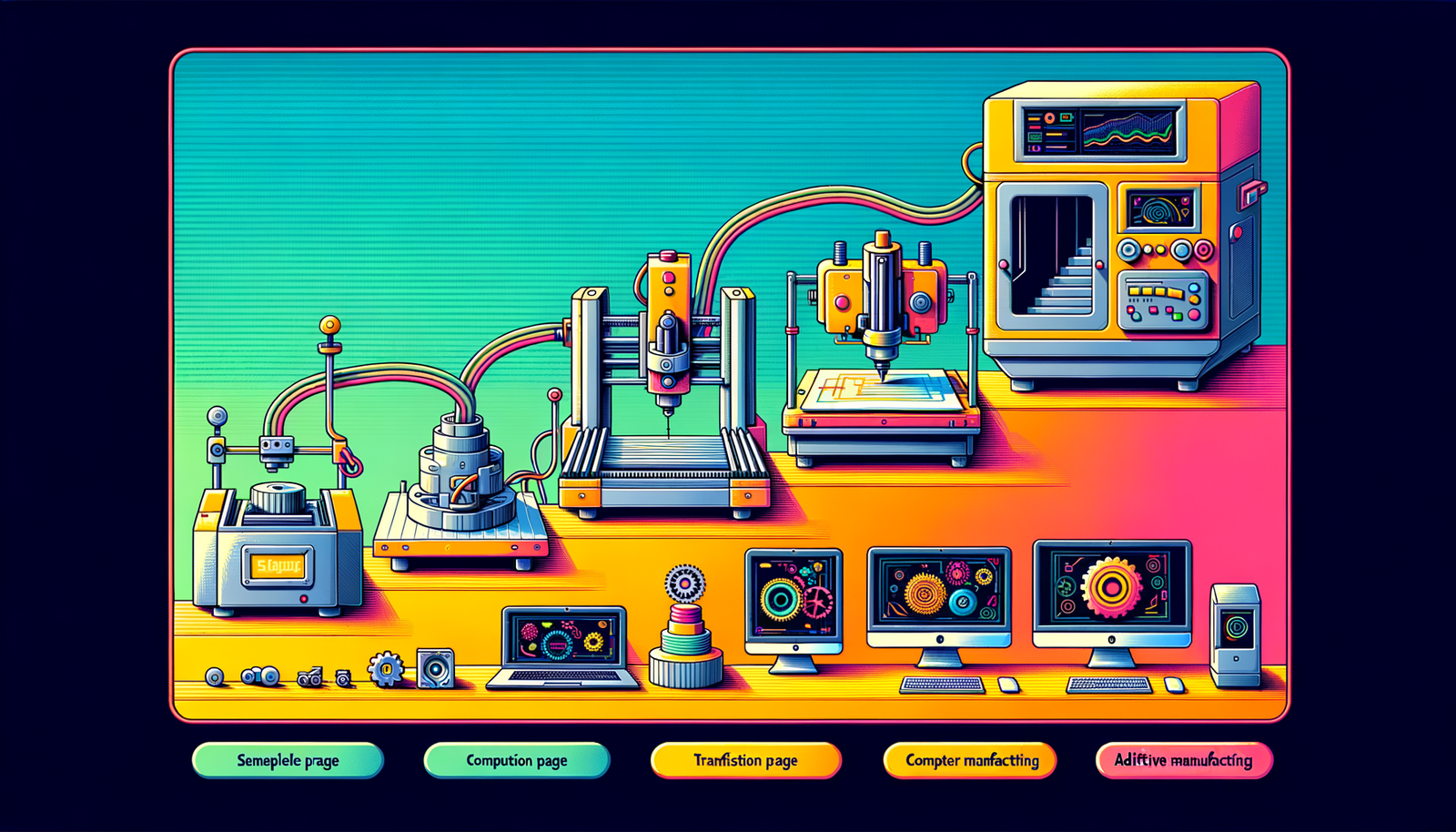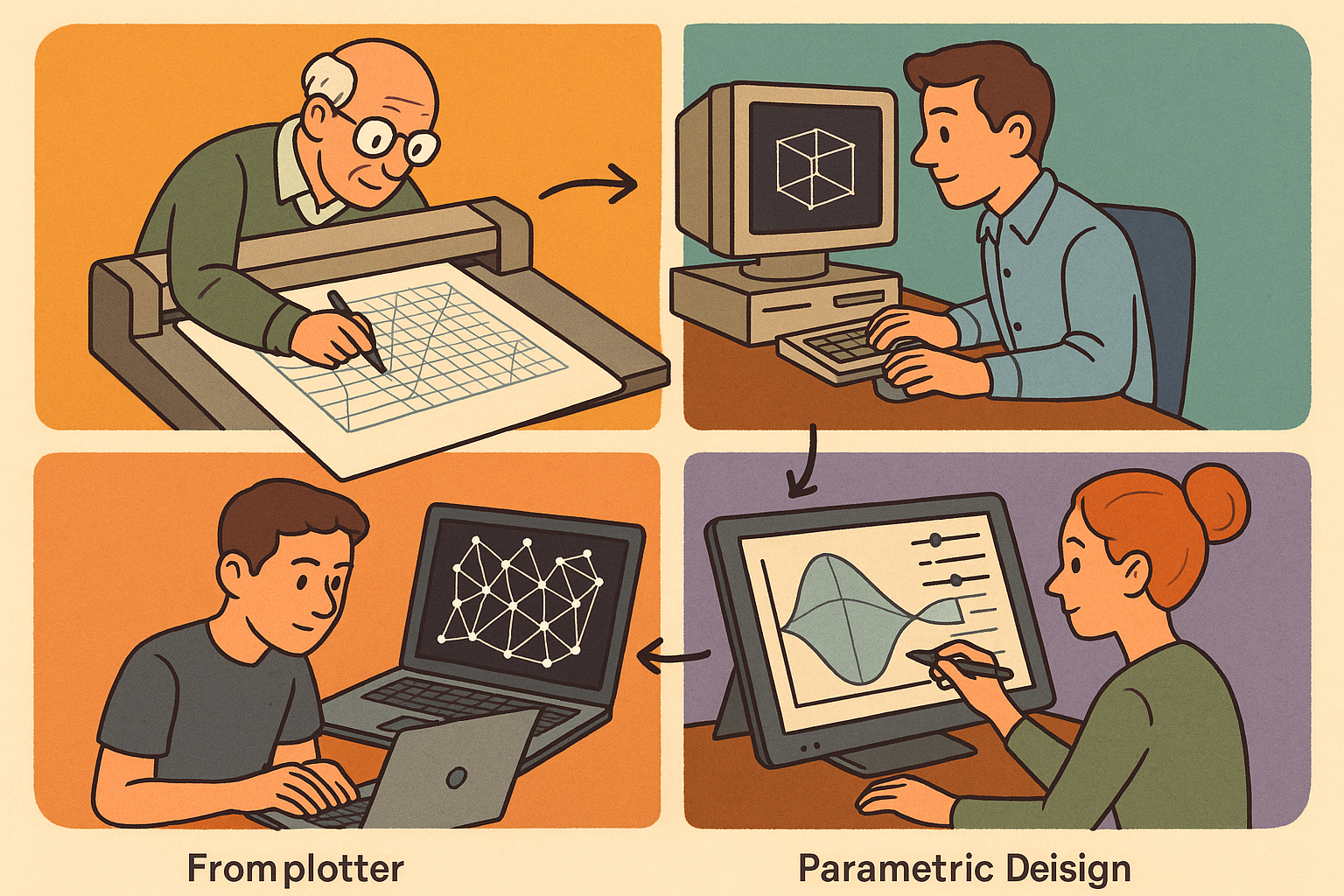Your Cart is Empty
The Genesis of Digital Fabrication
Early Concepts and Innovations
The origins of digital fabrication can be traced back to the mid-20th century, a time marked by scientific curiosity and technological exploration. Early pioneers envisioned a future where machines could be controlled using digital instructions to perform complex tasks with unparalleled precision. This vision laid the groundwork for what would eventually become the field of digital fabrication.
Key figures such as John T. Parsons and Frank L. Stulen were instrumental in the development of these early concepts. In the late 1940s, Parsons, an engineer, conceptualized the use of punched cards to control machine tools, which led to the creation of the first numerically controlled (NC) machine. Stulen, working alongside Parsons, helped refine these ideas, ultimately leading to the development of the first prototype in 1952.
During this period, other visionaries like MIT professor Ivan Sutherland made significant contributions by developing the Sketchpad in 1963, a revolutionary computer program that enabled users to draw directly on a computer screen. Sketchpad introduced core concepts in computer graphics and human-computer interaction, laying the foundation for future CAD systems.
Initial Technologies and Milestones
The advent of NC technology marked a landmark moment in the history of digital fabrication. By the 1960s, NC machines had evolved into Computer Numerical Control (CNC) systems, which utilized digital computers to control machinery. This advancement revolutionized manufacturing processes by enabling automation and increased precision.
The aerospace industry was among the earliest adopters of CNC technology, with companies like Boeing implementing CNC machines to streamline the production of aircraft components. This led to significant improvements in production efficiency and quality control.
One of the most notable milestones in this era was the development of APT (Automatically Programmed Tool), a high-level programming language for NC machines. Pioneered by researchers at MIT in the late 1950s, APT allowed for more complex and versatile programming of CNC machines, further driving the adoption of digital fabrication techniques in various industries.
In the subsequent decades, CNC technology continued to evolve, with the introduction of five-axis CNC machines in the 1980s. These machines offered even greater flexibility and precision, enabling the production of highly intricate parts. Companies like Haas Automation and Fanuc emerged as leading manufacturers of CNC machinery, pushing the boundaries of what was possible in automated manufacturing.
The Role of CAD Software in Digital Fabrication
Integration of CAD and CAM
The integration of Computer-Aided Design (CAD) and Computer-Aided Manufacturing (CAM) represents a pivotal advancement in the realm of digital fabrication. CAD software, which allows designers and engineers to create detailed 2D and 3D models, became increasingly sophisticated throughout the 1970s and 1980s. This evolution set the stage for seamless integration with CAM systems, which translate CAD models into machine-readable instructions for manufacturing.
One of the earliest and most influential CAD programs was AutoCAD, developed by Autodesk in 1982. AutoCAD revolutionized the design industry by providing a user-friendly interface and powerful tools for creating and editing detailed drawings. Its widespread adoption paved the way for other CAD software solutions to enter the market.
Another notable player in the CAD space is Dassault Systèmes, which introduced CATIA (Computer Aided Three-dimensional Interactive Application) in 1981. Originally developed for use in the aerospace industry, CATIA quickly gained popularity in other sectors due to its robust capabilities for 3D modeling and simulation. The integration of CATIA with CAM systems allowed for the direct translation of complex designs into manufacturing processes, significantly reducing development times and improving product accuracy.
The synergy between CAD and CAM systems facilitated a more efficient workflow, enabling designers and manufacturers to collaborate more effectively. This integration also played a crucial role in the advancement of digital fabrication technologies, as it allowed for the creation of more intricate and precise designs that could be easily translated into physical products.
Enhancements in Design Capabilities
Over the years, advancements in CAD software have significantly enhanced design capabilities, enabling the creation of increasingly complex and detailed models. Modern CAD tools offer a wide range of functionalities, including parametric modeling, simulation, and generative design, which have transformed the way designers and engineers approach the design process.
Parametric modeling, a feature available in many contemporary CAD programs, allows users to define and manipulate design parameters, such as dimensions and constraints, to create adaptable and reusable models. This capability has streamlined the iterative design process, enabling designers to make quick adjustments and explore various design alternatives.
Simulation tools integrated into CAD software have also played a crucial role in enhancing design capabilities. These tools allow users to perform virtual tests and analyses on their models, such as stress analysis, thermal simulations, and fluid dynamics, to ensure that the designs meet performance and safety requirements. By identifying potential issues early in the design process, simulation tools help reduce the need for physical prototyping and testing, saving both time and resources.
The emergence of generative design is another significant advancement in the field of CAD. Generative design leverages algorithms and artificial intelligence to explore a vast array of design possibilities based on defined constraints and objectives. This approach enables designers to discover innovative solutions that may not have been considered through traditional design methods. Companies like Autodesk and Siemens have been at the forefront of integrating generative design capabilities into their CAD software, empowering designers to create highly optimized and efficient products.
- Parametric Modeling: Enables quick adjustments and exploration of design alternatives.
- Simulation Tools: Perform virtual tests and analyses to ensure performance and safety.
- Generative Design: Leverages algorithms and AI to explore innovative design solutions.
The Advent of Additive Manufacturing
Emergence of 3D Printing
The emergence of 3D printing, also known as additive manufacturing, marked a revolutionary shift in the landscape of digital fabrication. Unlike traditional subtractive manufacturing methods, which involve removing material to create a part, additive manufacturing builds objects layer by layer from digital models. This approach offers unprecedented design freedom and the ability to create complex geometries that would be difficult or impossible to achieve with conventional methods.
The history of 3D printing dates back to the 1980s, with one of the most significant milestones being the invention of stereolithography (SLA) by Chuck Hull in 1984. Hull, the co-founder of 3D Systems, developed a process that used ultraviolet lasers to cure photopolymer resin, layer by layer, to create solid objects. This breakthrough paved the way for the development of other 3D printing technologies, such as selective laser sintering (SLS) and fused deposition modeling (FDM).
Key figures in the development of additive manufacturing include Scott Crump, who invented FDM in 1989 and co-founded Stratasys, and Carl Deckard, who developed SLS while working on his graduate thesis at the University of Texas at Austin. These pioneers, along with companies like EOS and Materialise, have played a crucial role in advancing 3D printing technology and expanding its applications across various industries.
Impact on Various Industries
Additive manufacturing has had a profound impact on numerous industries by enabling the production of custom, high-performance components with reduced lead times and material wastage. It has also opened up new possibilities for innovation and design, allowing industries to explore novel solutions and approaches.
In the aerospace industry, companies like Airbus and GE Aviation have utilized 3D printing to produce lightweight and complex components, such as fuel nozzles and structural brackets, that contribute to improved fuel efficiency and performance. The ability to create intricate lattice structures and optimize material distribution has also led to significant weight reductions, which are critical in aerospace applications.
The automotive industry has also embraced 3D printing for prototyping and end-use part production. Manufacturers like Ford and BMW have leveraged additive manufacturing to create custom tools, jigs, and fixtures, as well as specialized components for high-performance vehicles. This technology has allowed for faster iteration cycles and the ability to produce parts on-demand, reducing inventory costs and lead times.
In the healthcare sector, 3D printing has revolutionized the production of personalized medical devices and implants. Companies like Stryker and Johnson & Johnson have utilized additive manufacturing to create patient-specific implants, such as hip and knee replacements, that offer improved fit and function. Additionally, 3D printing has enabled the creation of complex anatomical models for surgical planning and training, enhancing the precision and outcomes of medical procedures.
The versatility and potential of additive manufacturing continue to expand, with ongoing research and development efforts focused on new materials, processes, and applications. As the technology matures, it is expected to play an increasingly significant role in shaping the future of various industries.
- Aerospace: Lightweight, complex components for improved fuel efficiency and performance.
- Automotive: Custom tools, jigs, fixtures, and specialized high-performance components.
- Healthcare: Personalized medical devices, implants, and anatomical models for surgical planning.
The Future of Digital Fabrication and Design Software
Innovations on the Horizon
As digital fabrication continues to evolve, several innovations on the horizon promise to further revolutionize the design and manufacturing landscape. Emerging technologies such as metal 3D printing, bioprinting, and multi-material fabrication are poised to unlock new possibilities and applications.
Metal 3D printing, also known as additive manufacturing of metals, has garnered significant attention for its ability to produce high-strength, complex metal parts with precision. Technologies like Direct Metal Laser Sintering (DMLS) and Electron Beam Melting (EBM) have already demonstrated their potential in industries such as aerospace, automotive, and medical implants. Companies like Renishaw and Desktop Metal are at the forefront of advancing metal 3D printing, exploring new alloys and process optimizations to enhance performance and reliability.
Bioprinting is another promising innovation that involves the use of 3D printing technology to create biological structures, such as tissues and organs. Researchers and companies like Organovo and CELLINK are working on developing bioprinting techniques that could revolutionize the field of regenerative medicine and tissue engineering. The ability to create functional, patient-specific tissues on demand holds the potential to address organ shortages and improve the outcomes of medical treatments.
Multi-material fabrication, which involves the simultaneous use of different materials in a single print, is also gaining traction. This capability allows for the creation of parts with varying material properties, enabling the production of multi-functional components. Companies like Stratasys and PolyJet are pioneering advancements in multi-material 3D printing, opening up new opportunities for innovation in product design and manufacturing.
Challenges and Opportunities
While digital fabrication technologies offer immense potential, they also present several challenges that need to be addressed to fully realize their benefits. Material limitations, scalability, and post-processing requirements are among the key challenges that the industry faces.
Material limitations remain a significant hurdle, as the range of materials suitable for digital fabrication continues to expand. However, ongoing research and development efforts are crucial to developing new materials with enhanced properties, such as improved strength, durability, and biocompatibility.
Scalability is another challenge, particularly for additive manufacturing processes. While 3D printing is well-suited for producing small batches and customized parts, scaling up production for mass manufacturing can be challenging. Innovations in printer technology, automation, and process optimization are essential to address these scalability issues.
Post-processing requirements, such as cleaning, curing, and finishing, can also add complexity and time to the digital fabrication workflow. Developing more efficient and automated post-processing solutions will be key to streamlining production and reducing overall lead times.
Despite these challenges, digital fabrication presents numerous opportunities for designers and engineers to harness new capabilities and drive innovation. The ability to create highly customized, complex, and optimized designs offers a competitive advantage in various industries. By embracing digital fabrication technologies, companies can enhance their product development processes, reduce time to market, and deliver more innovative and tailored solutions to their customers.
Role of Emerging Technologies
Emerging technologies such as artificial intelligence (AI), virtual reality (VR), and the Internet of Things (IoT) are set to play a significant role in shaping the future of digital fabrication and design software. These technologies have the potential to enhance various aspects of the design and manufacturing process, from ideation and prototyping to production and quality control.
Artificial intelligence can be leveraged to optimize design processes and improve decision-making. AI-driven algorithms can analyze vast amounts of data to identify patterns, optimize design parameters, and generate innovative solutions. This capability is particularly valuable in generative design, where AI can explore a wide range of design possibilities and propose highly optimized and efficient designs.
Virtual reality offers immersive design experiences, enabling designers and engineers to visualize and interact with their models in a virtual environment. This technology enhances collaboration and communication, allowing stakeholders to review and provide feedback on designs in real-time. VR also facilitates better understanding of spatial relationships and ergonomics, leading to more informed design decisions.
The Internet of Things connects digital fabrication systems and devices, enabling real-time monitoring, data collection, and analysis. IoT integration allows for more efficient and automated production processes, as well as predictive maintenance and quality control. By leveraging IoT data, manufacturers can optimize their operations, reduce downtime, and ensure consistent product quality.
Looking ahead, these emerging technologies are expected to further integrate with digital fabrication and design software, creating a more connected and intelligent ecosystem. As AI, VR, and IoT continue to evolve, they will unlock new possibilities and drive further advancements in the field of digital fabrication.
In conclusion, the journey from the early concepts of digital fabrication to the transformative impact of additive manufacturing has been marked by significant advancements and innovations. The integration of CAD and CAM, the emergence of 3D printing, and the ongoing development of new technologies have revolutionized design and manufacturing processes. As we look to the future, the continued evolution of digital fabrication promises to unlock new opportunities and shape the way we design and create products.







